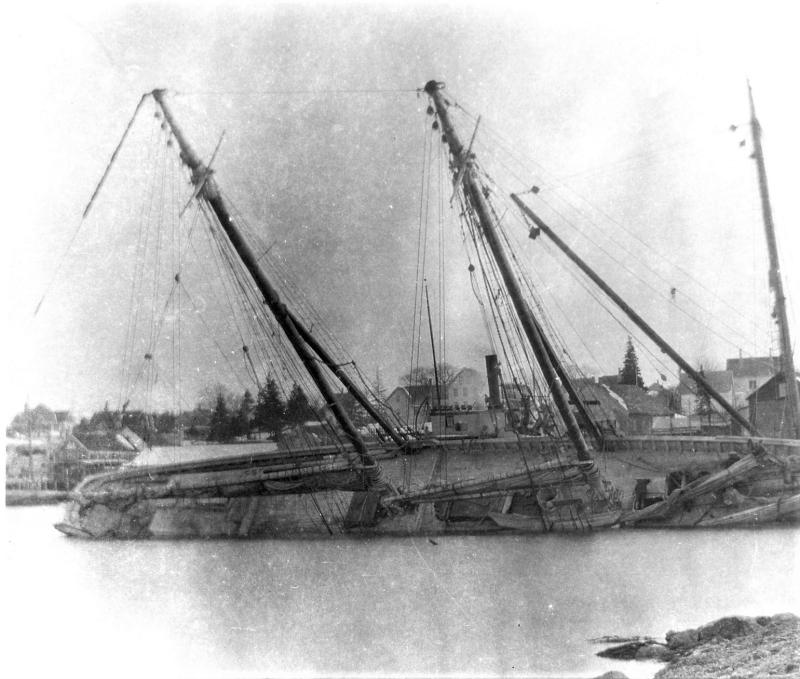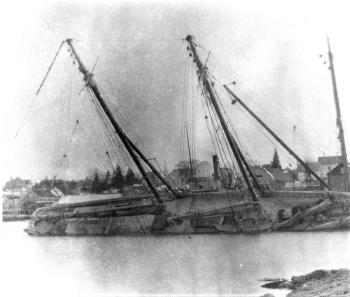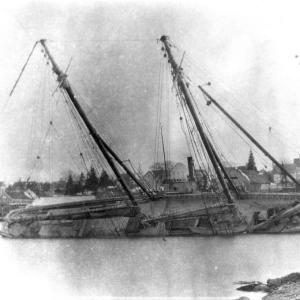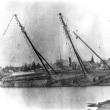The Elizabeth Howard
I wrote this article back in 2004. I figure now enough years have elapsed for people to enjoy reading it again, or perhaps the population has changed enough in about 20 years that it might seem as though the article hadn’t seen the light of day.
On Dec. 9, 1916 the 119-foot schooner Elizabeth Howard was launched from Frank Adams's shipyard in East Boothbay’s little harbor. The Adams Shipbuilding Company then occupied the site bought by Goudy & Stevens in 1924, which Goudy’s continued to own for many decades. The Howard's owner was William Willard Howard of New York and she was intended to be a mackerel fisherman. Upon having an engine installed in her, she became an auxiliary schooner. She was fitted out at dockside until early February 1917, when East Boothbay captain, Sammy Murray, took her to Gloucester. Soon thereafter her owner offered her as a patrol boat during the World War I war effort. It was more advantageous to offer a vessel to the government than to have it taken with or without permission. A little bargaining could happen to the owner’s advantage, such as squeezing in one more profitable fishing trip before being handed over to the government.
According to the Jan. 24, 1919 Boothbay Register, she was back fishing, chiefly buying fish off Newfoundland and carrying the cargo to buyers. No doubt provisioning the war depended on fish for bait and men and far-off southern states as much as it did vessels and guns. By then the Elizabeth Howard acquired the nickname, the White Ghost. In late 1918 the Howard made a delivery to New York and was run into by another vessel, but was seemingly barely damaged. With orders to head back to Newfoundland to get another 200,000 pounds of fish, and then sail to Greece, she decided to put in to East Boothbay on her way to check for any repairs.
Awash in East Boothbay
In early January 1919 she arrived at East Boothbay's harbor. She either sank from hidden damage or went aground on a ledge -- either way she was on the bottom or awash not far from her launching ways. Seen here, the view from the river is looking west to: on the left, the present site of Lobsterman's Wharf; center, the Hodgdon tidemill, its breakwater (also called the million-dollar bridge during minesweeper days for the amount of money said to be wasted by men walking back and forth between the yards) and the Hodgdon stable. On the right are the Hodgdon Brothers wharf and its shipyard boatshops, with the present post office building behind.
Pumped out by Jan. 17, the Howard headed for the railway (now Sample's) to be checked for damage. While in the harbor, her cargo of over 400,000 pounds of fish was taken out, stacked in cords, and resalted. The first cord weighed 8,700 pounds -- it must have been quite a sight to see about 46 cords of fish laid out on the Phinney wharf, now the Fisherman's Wharf area.
The Elizabeth Howard continued fishing until 1923 when she was caught in a storm off Nova Scotia and sank with all hands. The shallow fishing grounds along Nova Scotia, Newfoundland, and Labrador in Bay Chaleur were principal killing grounds for fish and for fishermen. Most years from the 1830s to the 1870s and beyond a few Boothbay schooners did not return from there. Gone with the lost vessels were their crews. Occasionally later visiting vessels got eyewitness reports of their fellow fishing companions being wrecked or their remains, wreckage, and belongings washing ashore. Fishing in the maritimes was a dangerous, fraught way to make a living.





























